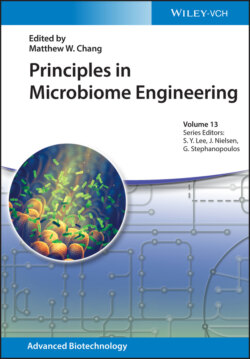Читать книгу Principles in Microbiome Engineering - Группа авторов - Страница 28
1.2.1.3 Dietary Fibers
ОглавлениеDietary fibers are non‐soluble polysaccharides that form the structural component of the plant. These fibers function as prebiotic source, where they form scaffolds for microbial localization and further serve as substrates for microbial fermentation. These fibers include fructans, polydextrose, fructooligosaccharides (FOS), galactooligosaccharides (GOS), xylooligosaccharides (XOS), and arabinooligosaccharides (AOS) [86]. Fiber‐rich diets, such as those of vegetarians and vegans, were found to help alleviate health problems including cardiovascular diseases and cancer [87]. Fiber‐rich diet showed a depletion of Bacteroidetes, Clostridium and Enterococci abundance, and trigger the increase of lactic acid bacteria, Ruminococcus, Eubacterium rectale, and Roseburia abundance. In the presence of dietary fibers, these lactic acid–producing bacteria ferment the fibers to produce short‐chained fatty acids (SCFA) such as acetate, propionate, and butyrate [88]. These SCFA influence the growth of some microbes in the gut, exerting health‐benefiting properties including regulating pathogenic microbial growth [89]. A higher percentage of Bacteroides was found in the intestines of people eating Western diets, while those who ate fruits and beans from a high‐fiber diet found the opposite [90]. The summary of how dietary fiber affects the gut microbiota is shown in Table 1.3.
Table 1.3 Effect of non‐digestible carbohydrates on gut microbiota.
| Bacterial abundance | Gene richness | Lacto bacilli | Bifido bacteria | Clost ridia | Enter ococcus | Rose buria | Eubac teria | Rumin ococcus | References | |
|---|---|---|---|---|---|---|---|---|---|---|
| Fiber/ prebiotics | ↑ | ↑ | ↑ | ↑ | ↓ | ↑↓ | [70, 91] | |||
| Resistant starch | ↑ | ↑ | ↑ | ↑ | ↑ | ↑ | ↑ | [70, 91, 92] |
Arrow thickness corresponds to the relative number of studies supporting the relationship.
Source: Based on Glick‐Bauer and Yeh [90].
